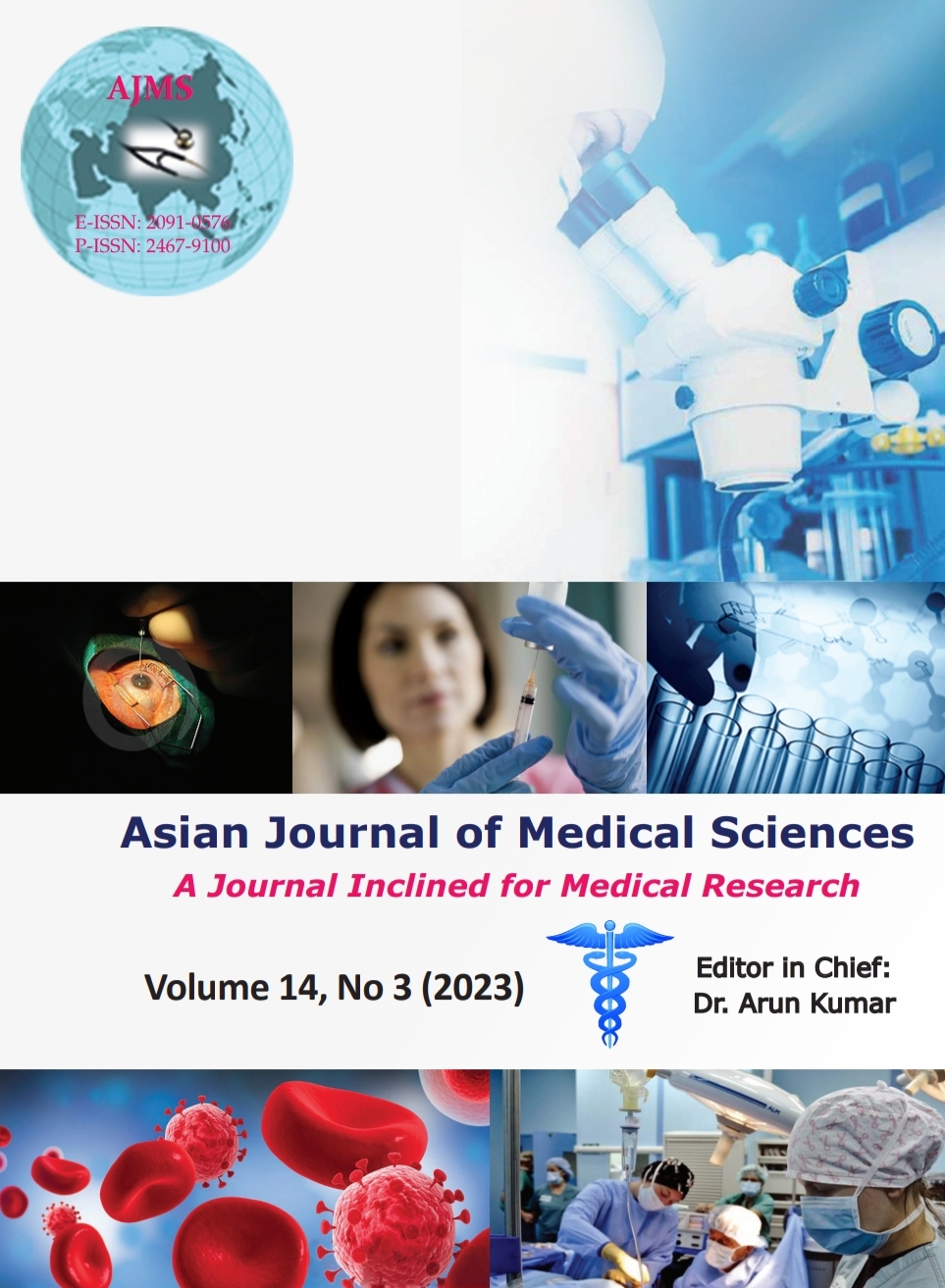A cross-sectional study on the role of hematological and inflammatory biomarkers as predictor of mortality at the time of admission among COVID-19 patients
Keywords:
Hematology; Inflammatory biomarker; Non-survivors; Adverse outcome; C-reactive protein; Neutrophil lymphocyte ratioAbstract
Background: Whole world experienced COVID-19 pandemic with more than 155 million cases and >3.4 million deaths. Vasculitis and immune system activation plays a critical role in pathogenesis, especially in severely ill and non-survivors COVID-19 patients.
Aims and Objectives: The aim of the study was to establish the role of hematological indices and inflammatory biomarker as predictors of mortality among non-survivor and survivor COVID-19 cases at the time of admission.
Materials and Methods: The cross-sectional study was conducted at a dedicated COVID-19 referral hospital from July 2020 to August 2020, among 300 real time-polymerase chain reaction confirmed COVID-19 cases. Demographic, clinical, comorbidity, laboratory investigation, and outcome data were collected from patient’s medical record. Outcome variables – discharged (survived) or death (non-survived) were considered for comparison of various hematological indices and inflammatory biomarkers. Data are represented as median, IQR (Q1-Q3) and difference between median and proportions were calculated by Mann–Whitney U-test and χ² test. A predictive power of laboratory parameters between survivors and non-survivors was evaluated using receiver operant curve (ROC) analysis and area under the ROC curve (AUC).
Results: The median age of non-survivors was significantly higher than survivors. Hypertension was significantly associated with non-survivors. Hematological parameters such as total leukocyte count, absolute neutrophil count, Neutrophil: Lymphocyte ratio were significantly increased with lymphocytopenia (P=0.001), and Inflammatory biomarkers such as C-reactive protein (CRP), lactate dehydrogenase, D-dimer, ferritin, procalcitonin, and NT-Pro BNP, all were significantly increased in non-survivors patients (P=0.001). CRP and neutrophil lymphocyte ratio (NLR) showed “Good” predictive value for mortality with cutoff value of 74.0 mg/l (AUC=0.841, Sensitivity=80.4%, Specificity=73.0%) and 5.65 (AUC=0.805, Sensitivity=76.1%, Specificity=73.0%), respectively. Pro-BNP showed “Fair” predictive value for mortality with cutoff value of 330.5 pg/ml (AUC=0.726, Sensitivity=73.9%, Specificity=58.2%).
Conclusion: We suggest that CRP, NLR, and Pro-BNP can be used as a screening tool to predict mortality in COVID-19 patients for timely intervention to save valuable life, especially when sensitivity toward severity of COVID-19 among medical health professionals and general public is on decline.
Downloads
Downloads
Published
How to Cite
Issue
Section
License
Copyright (c) 2023 Asian Journal of Medical Sciences

This work is licensed under a Creative Commons Attribution-NonCommercial 4.0 International License.
Authors who publish with this journal agree to the following terms:
- The journal holds copyright and publishes the work under a Creative Commons CC-BY-NC license that permits use, distribution and reprduction in any medium, provided the original work is properly cited and is not used for commercial purposes. The journal should be recognised as the original publisher of this work.
- Authors are able to enter into separate, additional contractual arrangements for the non-exclusive distribution of the journal's published version of the work (e.g., post it to an institutional repository or publish it in a book), with an acknowledgement of its initial publication in this journal.
- Authors are permitted and encouraged to post their work online (e.g., in institutional repositories or on their website) prior to and during the submission process, as it can lead to productive exchanges, as well as earlier and greater citation of published work (See The Effect of Open Access).




